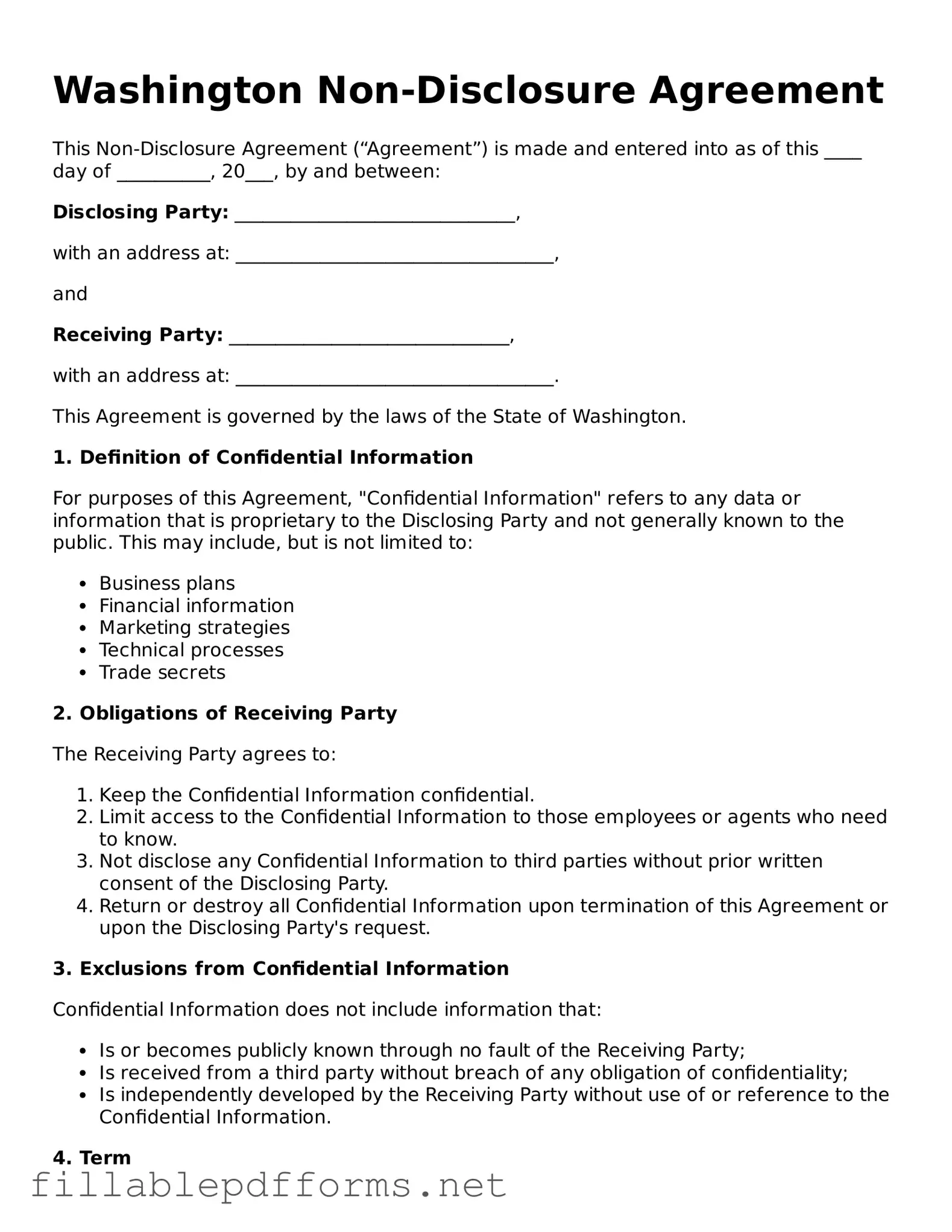In Washington State, the Non-disclosure Agreement (NDA) is a vital tool for protecting sensitive information shared between parties. This agreement serves to ensure that confidential details, whether related to business operations, trade secrets, or proprietary data, remain secure and are not disclosed to unauthorized individuals. Key components of the Washington NDA include definitions of what constitutes confidential information, the obligations of the parties involved, and the duration of confidentiality. It's also important to note the consequences of breach, which can lead to legal action. By establishing clear guidelines, this form fosters trust and encourages open communication, allowing businesses and individuals to collaborate without the fear of sensitive information falling into the wrong hands. Whether you’re a startup looking to protect your innovative ideas or an established company safeguarding its client lists, understanding the intricacies of the Washington NDA is essential for maintaining your competitive edge.
